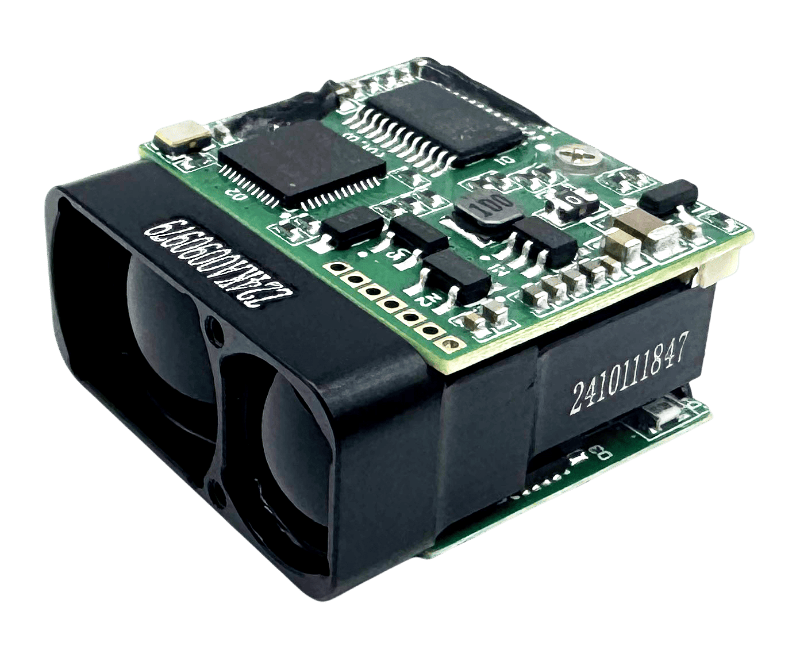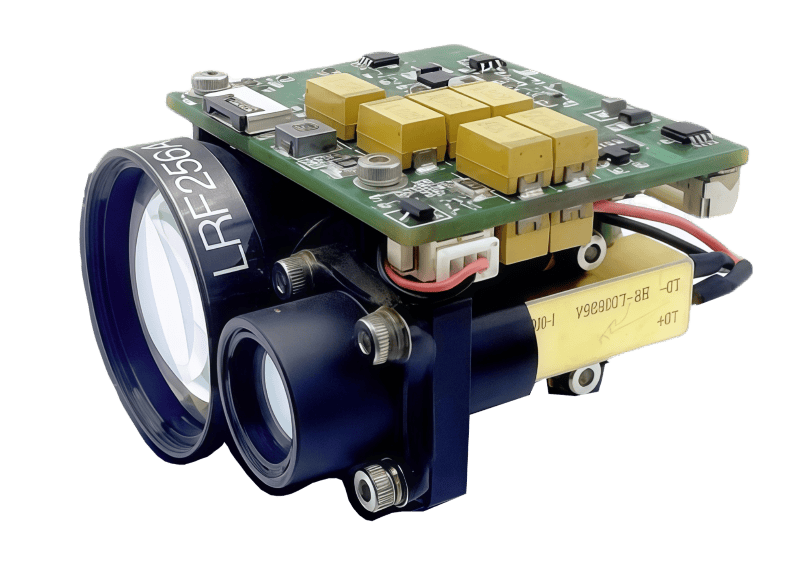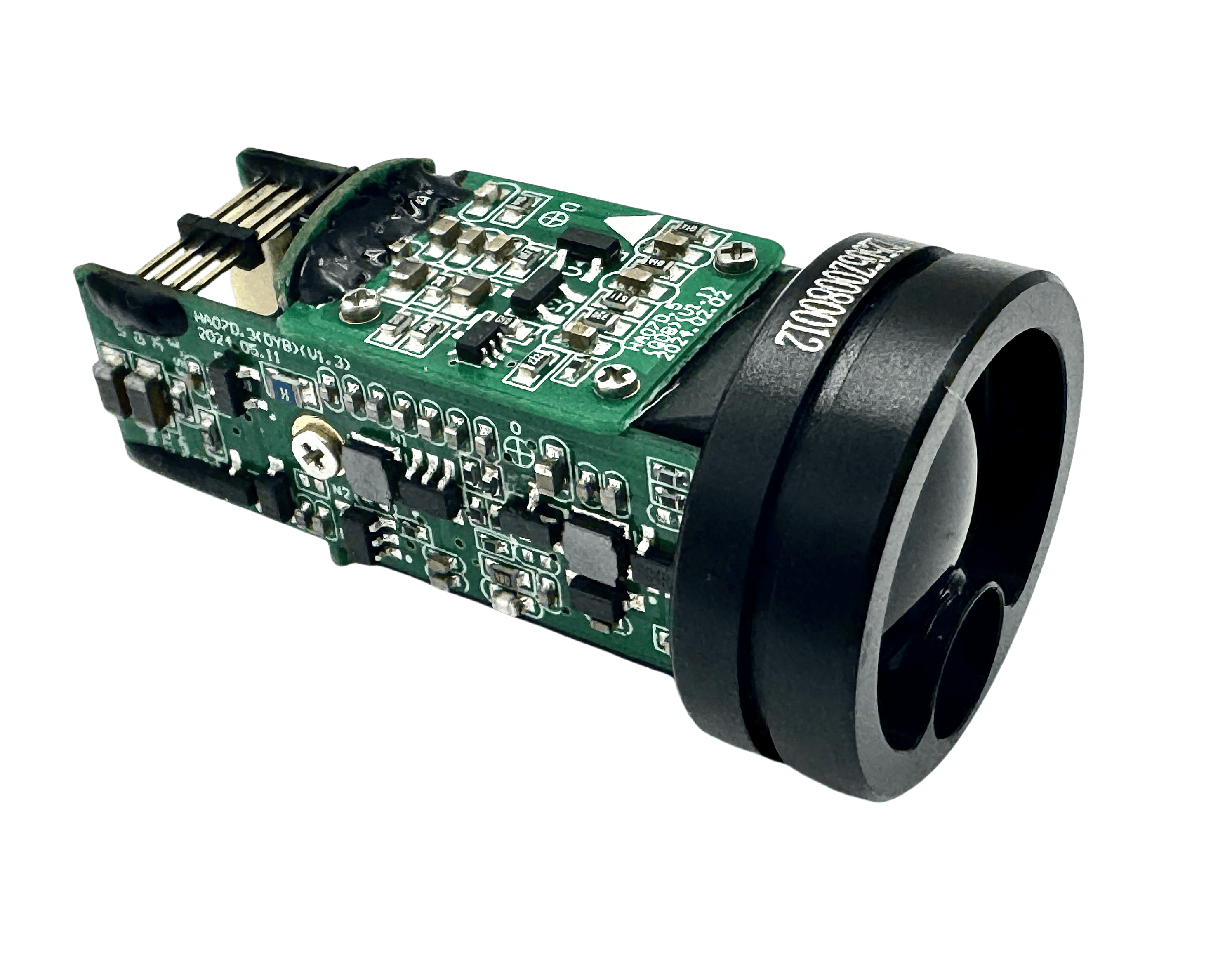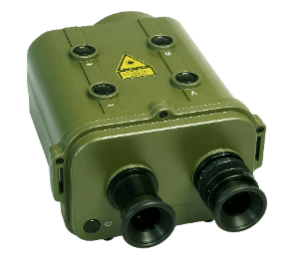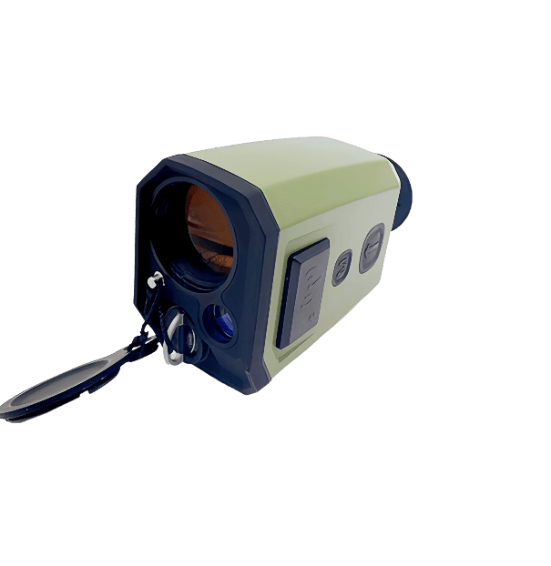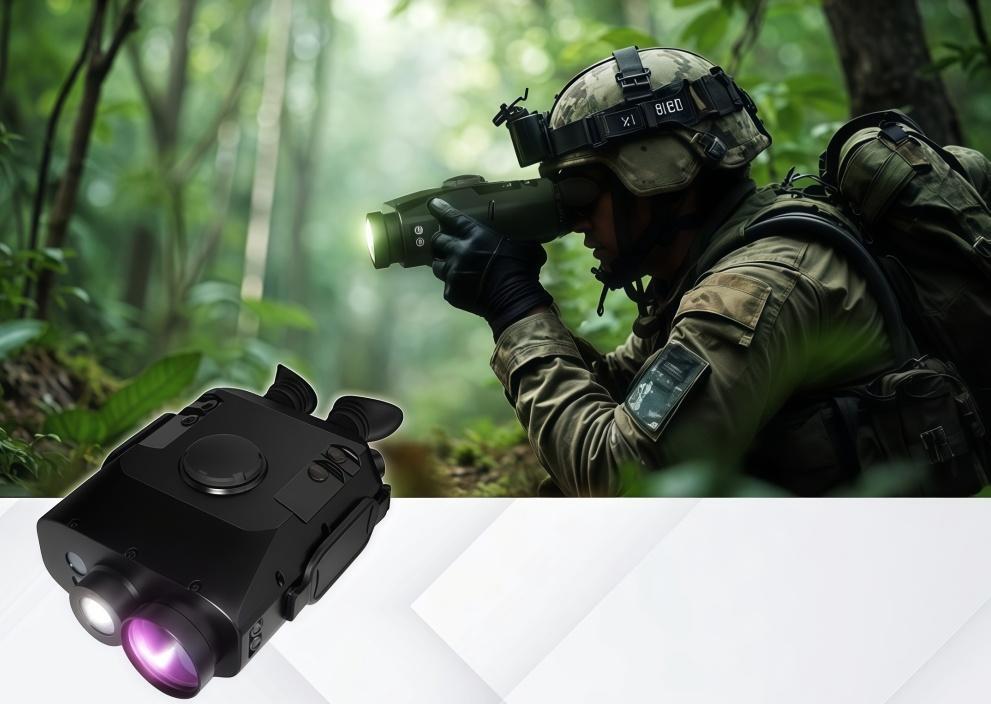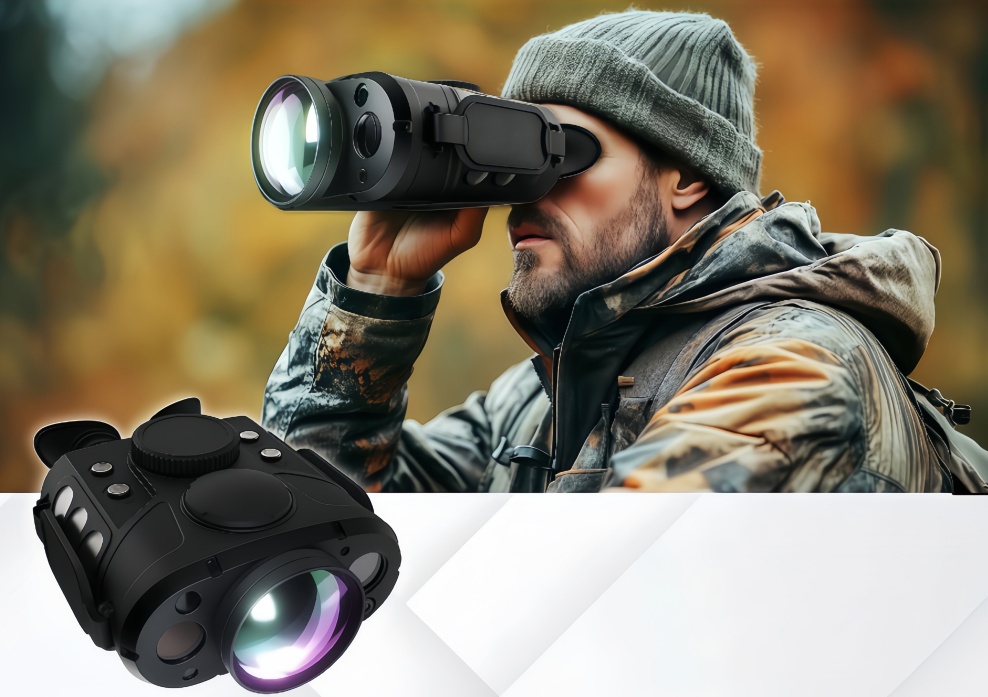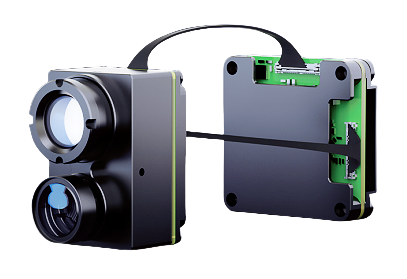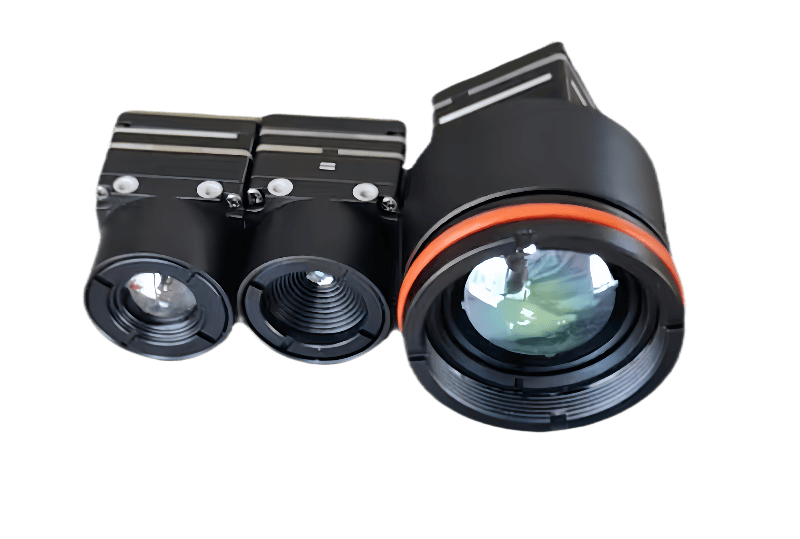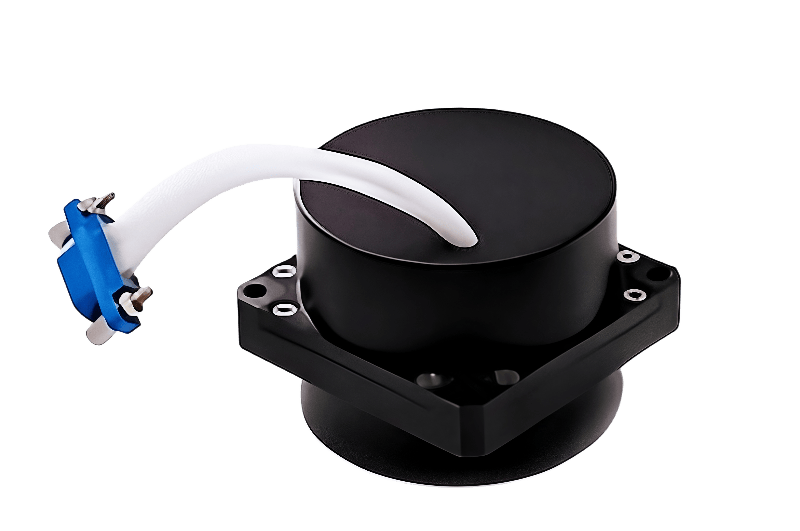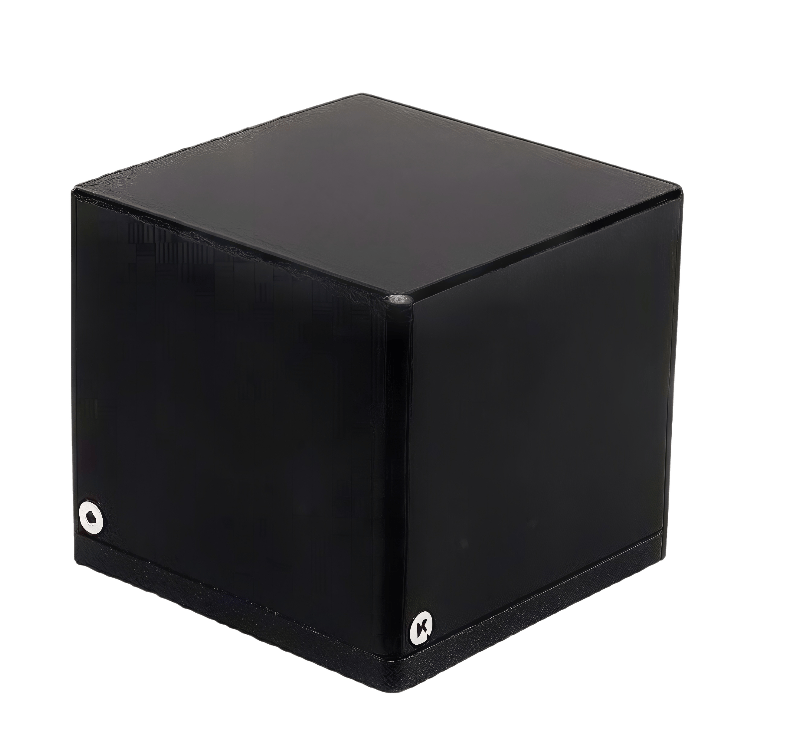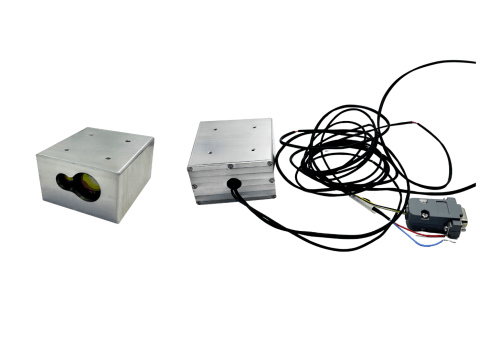- Home
- About us
- ProductsProduct Classification
- Blog
- Contact us
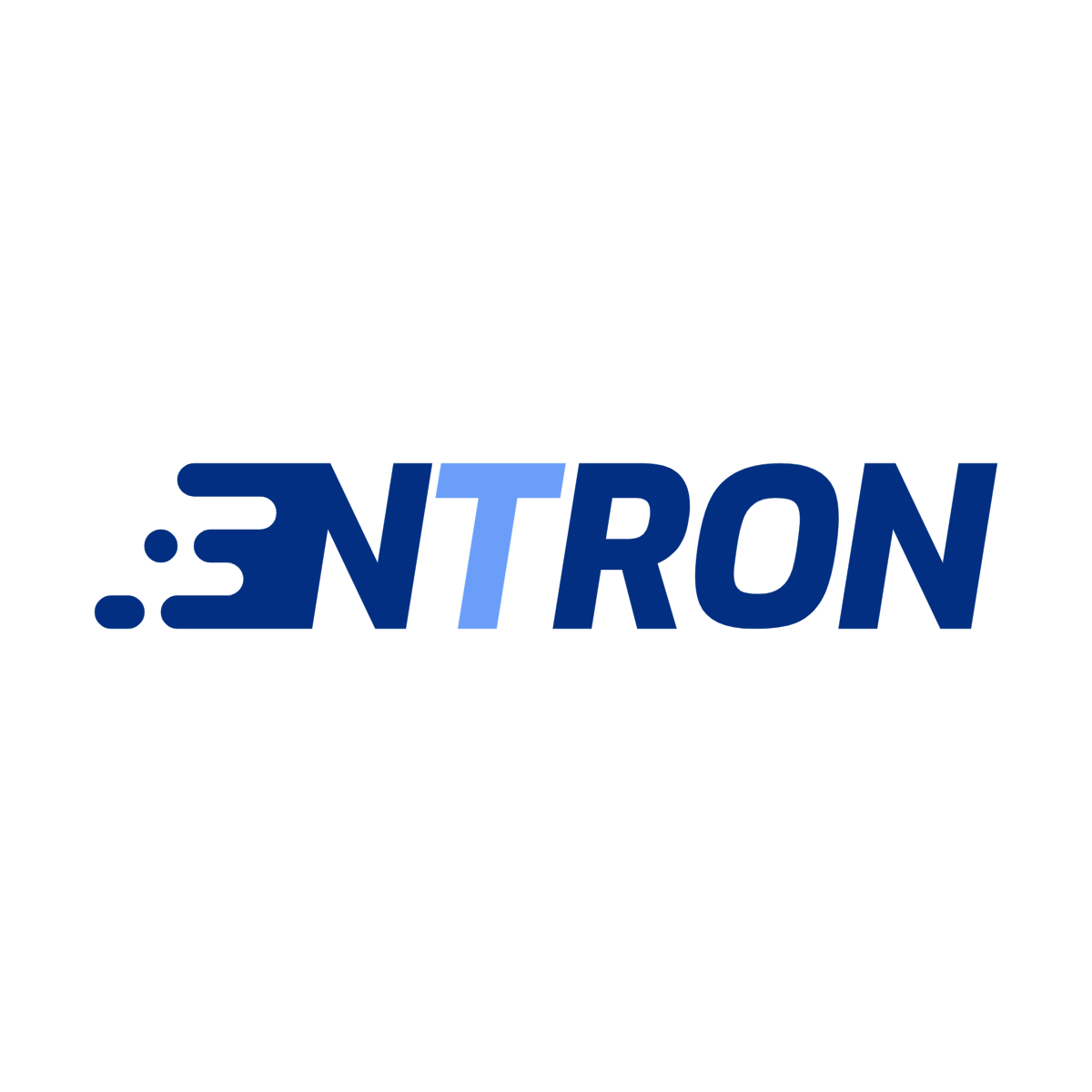
Aluminum Alloy Enclosure for Laser Ranging Modules: Electromagnetic Shielding & Sealing Solutions
Electromagnetic Shielding & Equipment Protection for Laser Rangefinder Module
Aluminum alloy enclosure to the exterior of a laser ranging module primarily serves to ensure stable module operation through electromagnetic shielding (EMI shielding) while reducing electromagnetic interference (EMI) from the module to surrounding devices.
I. Core Principle: Why Aluminum Alloy Blocks Electromagnetic Radiation?
Electromagnetic shielding leverages the "reflection, absorption, and conduction" capabilities of good conductors (Aluminum alloy is one of the most widely used mainstream materials in the market) to interrupt the propagation path of electromagnetic radiation:
Against Electric Fields: Free electrons in aluminum alloy undergo "electrostatic induction" under external electric fields, forming reverse electric fields that cancel out external fields and prevent penetration.
Against Magnetic Fields: Changing magnetic fields induce "eddy currents" in aluminum alloy. These currents generate reverse magnetic fields to weaken external magnetic fields, while their thermal effect dissipates part of the magnetic energy.
Against Electromagnetic Waves (Combination of Electric & Magnetic Fields): Most electromagnetic waves are reflected by the aluminum surface; a small portion penetrating the surface is absorbed by eddy currents inside the metal, ensuring no interference with internal modules.
II. Practical Values for Laser Ranging Modules
A laser ranging module operates by "emitting laser → receiving reflected light → calculating distance via circuits," featuring high-precision sensors, signal processing chips, and high-frequency oscillation circuits—all highly sensitive to electromagnetic environments. The aluminum alloy enclosure delivers dual benefits:
Block External EMI to Ensure Ranging Accuracy
The module’s signal processing (e.g., amplifying weak currents from photosensors, nanosecond-level time calculation by timing chips) is prone to interference from external electromagnetic fields, leading to distance reading deviations, data fluctuations, or even module crashes. The aluminum enclosure effectively shields against common interference sources:
Strong electromagnetic fields from motors, inverters, and high-voltage equipment in industrial environments;
High-frequency noise from microcontrollers, communication modules (Bluetooth/Wi-Fi), and power supply modules in electronic systems;
Transient electromagnetic pulses from electrostatic discharge (ESD) or power grid fluctuations.
Example: Without shielding, a module near an operating motor may show readings fluctuating between 9.8-10.2m for an actual 10m distance. With the aluminum alloy enclosure, fluctuations are reduced to within ±0.01m, meeting high-precision measurement requirements.
Prevent Internal EMI Leakage to Avoid Disturbing Surrounding Devices
During operation, the module’s internal high-frequency oscillation circuits (e.g., laser driver circuits) and pulse signal circuits generate electromagnetic radiation. Uncontained radiation may interfere with other electronic devices, disrupting system compatibility:
For instance, if the module shares a system with drone(UAV) flight controllers or PLC controllers, leaked electromagnetic waves can cause flight control signal delays or false PLC command triggers;
The aluminum enclosure "confines" internal radiation and conducts it away via the metal shell (grounding recommended for better performance), eliminating interference with external equipment.
Additional Benefits: Physical Protection & Environmental Adaptability
Beyond EMI shielding, the aluminum enclosure provides supplementary protection:
Physical Protection: Resists collisions and friction damage to the module’s housing and pins, ideal for harsh outdoor or industrial environments;
Dust & Moisture Resistance: When paired with seals, aluminum’s airtightness reduces dust and moisture ingress, slowing electronic component aging and extending service life.
III. Key Considerations for Effective Shielding
To maximize shielding performance, avoid these common pitfalls:
Full Enclosure Closure: Minimize large openings (e.g., control heat dissipation hole size or cover with metal mesh). Seal gaps with conductive adhesive to prevent "gap leakage effect";
Grounding Recommended: Connect the aluminum enclosure to system ground or earth to conduct absorbed electromagnetic energy, enhancing shielding efficiency (especially for low-frequency magnetic fields);
Optimal Thickness: For high-frequency electromagnetic radiation (100MHz-1GHz, common in laser modules), 0.5-1mm thick aluminum suffices. Excessive thickness increases weight and cost without significant shielding improvements.
Why aluminum 0.5-1mm Thickness Is Sufficient?
Theoretically, even for the lower limit of the frequency range you mentioned—100MHz—electromagnetic waves can only penetrate approximately 8 micrometers (0.008mm) of aluminum. A thickness of 0.5-1mm is 60 to 120 times greater than this skin depth. From the perspective of electromagnetic wave attenuation, this thickness already delivers extremely excellent shielding effectiveness (typically 60-100 dB or higher), which is more than enough to reduce radiation intensity to 1/1,000,000 (one millionth) or even 1/1,000,000,000 (one billionth) of its original level.
Why “No Significant Improvement” with Thicker Aluminum?
Shielding effectiveness (SE) has a logarithmic relationship with thickness, not a linear one. When the thickness is already far greater than the skin depth, increasing the thickness further brings only minimal improvement to shielding effectiveness. For example:
Increasing the thickness from 0.5mm to 5mm may only boost shielding effectiveness by a few decibels;However, the weight and cost of the aluminum enclosure will increase by 10 times simultaneously.
This is extremely uneconomical in engineering applications—especially for industrial products like laser ranging modules, where balancing performance, weight, and cost is critical.
IV. Glass Window Specifications for Laser Transmission
Material: H-K9L Optical Glass
H-K9L is a widely used colorless optical glass, ideal for laser wavelengths ranging from 300nm to 2100nm. It offers high cost-effectiveness and excellent physical properties—perfect for laser rangefinder applications.
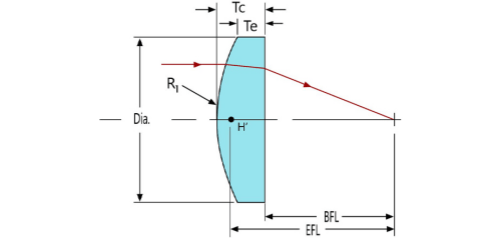 | |||
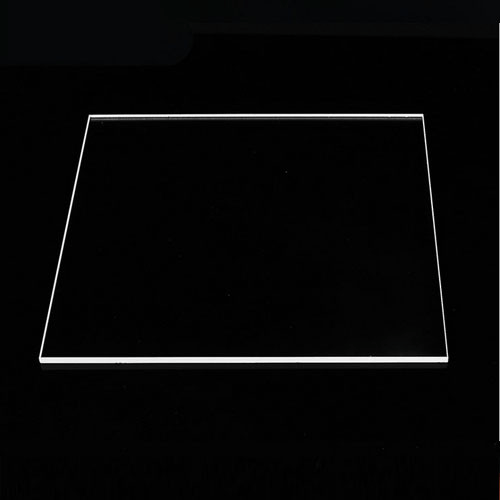 | |||
Processing Requirements
1) Wedge Tolerance: ≤3′ (tolerance grade ≤7) for minimal optical distortion;
2) Surface Smoothness: Recommended arithmetic mean deviation (Ra) = 0.012 for reduced laser scattering.
Coating Recommendations
1) For 1535nm laser rangefinders: Apply an anti-reflective (AR) coating for the 1525nm-1545nm band, ensuring transmittance ≥99%;
2) Optional protective coatings: Hydrophobic or hard coatings for the outer surface, tailored to specific operating environments (e.g., high humidity, dust).
Dimensional & Installation Guidelines
1) Aperture Requirements: Outer diameter ≥ effective aperture + 2mm; rangefinder antenna outer diameter ≥ projected effective aperture + 1.5mm;
2) Thickness Control: 2-4mm (to minimize laser absorption);
3) Optical Alignment: Axis deviation between emission optical axis and window normal: 2°-4°; minimize air gap between the window and rangefinder.
V. How to Ensure Glass Window Conductivity? ITO Transparent Conductive Coating
To meet both "EMI shielding (electrical conductivity)" and "minimal laser module impact (high transmittance, low optical interference)," Indium Tin Oxide (ITO) Transparent Conductive Coating is the optimal choice, followed by Fluorine-Doped Tin Oxide (FTO).
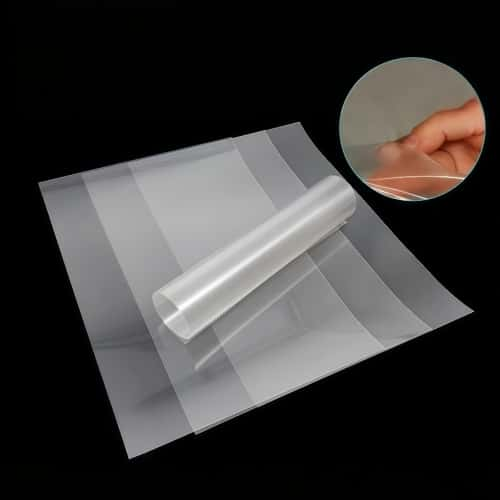 |
Core Evaluation Criteria for "Minimal Impact"
1) Laser Transmittance: ≥85% for common wavelengths (905nm near-infrared, 1535nm,1550nm eye-safe infrared) to avoid energy attenuation or reduced measurement range;
2) Electrical Conductivity: Surface resistance ≤10Ω/sq to form a complete conductive path with the aluminum enclosure;
3) Low Optical Interference: Low reflectivity (prevents stray light) and low scattering (maintains ranging resolution);
4) Stability: Temperature/humidity resistance and strong adhesion for long-term reliability.
Comparison of Conductive Coatings
Coating Material | Laser Transmittance (905nm/1535nm/ 1550nm) | Surface Resistance (Ω/sq) | Reflectivity (Laser Band) | Core Advantages | Core Disadvantages | Impact on Laser Module |
Indium Tin Oxide (ITO) | 85%-95% / 90%-98% | 5-50 (optimizable) | <8% | Ultra-high NIR transmittance, low reflectivity, stable conductivity | Brittle film (prone to cracking under severe vibration) | Minimal |
Fluorine-Doped Tin Oxide (FTO) | 80%-90% / 85%-95% | 10-20 | <10% | Acid/alkali resistance, better wear resistance than ITO | Slightly lower NIR transmittance; temperature-sensitive resistance | Minor (inferior to ITO) |
Ultra-Thin Metal Film (Ag/Cu) | 50%-70% / 60%-80% | <1 | >20% | Excellent conductivity (strong shielding) | Low transmittance, high reflectivity (causes signal attenuation/stray light) | Significant |
Graphene Film | 97%-98% / 97%-98% | 500-1000 | <2% | Ultra-high transmittance, flexibility | Poor conductivity (fails EMI shielding); high mass production cost | Ineffective |
Zinc Oxide-Based (AZO) | 75%-85% / 80%-90% | 20-50 | <12% | Low cost, flexible fabrication | Low NIR transmittance; high-temperature resistance drift | Significant |
Why ITO Film is the Best Choice?
1) Superior Laser Compatibility: ITO’s main component (In₂O₃) absorbs almost no NIR light. Optimized film thickness (50-100nm) achieves >90% transmittance, with negligible impact on measurement accuracy (e.g., ±0.1mm error);
2) Ideal Conductivity-Shielding Balance: Tin (Sn) doping reduces surface resistance to 5-10Ω/sq. When connected to the aluminum enclosure via conductive adhesive, it forms a complete metal shield with SE≥30dB (meets industrial EMC requirements);
3) Low Optical Interference: ITO’s refractive index (≈1.9) is close to glass (≈1.5). AR coating structures (e.g., ITO+SiO₂) reduce reflectivity to <5%, avoiding stray light interference.
ITO Film Usage Notes
1) Preferred Process: Magnetron sputtering (vs. evaporation) for uniform film thickness (error <5%);
2) Conductive Connection: Seal gaps between glass and aluminum with conductive adhesive (e.g., silver-based) to ensure equipotentiality (shielding efficiency drops by >50% without proper connection);
3) Film Protection: Add a wear-resistant layer (e.g., ultra-thin quartz glass) for vibration-prone environments (e.g., industrial equipment, drones);
4) Wavelength Matching: Customize ITO film for special wavelengths (e.g., 650nm visible laser) to maintain transmittance.
Alternative: FTO Film (Cost-Sensitive Scenarios)
FTO is a cost-effective alternative with better durability in humid/corrosive environments. However, its lower NIR transmittance (≈85% vs. ITO’s 90%) reduces measurement range by 5%-10% (e.g., 100m → 95-98m), suitable for modules with sufficient range redundancy.
VI. Sealing Design: Glass Window & Aluminum Enclosure
Sealing must achieve both medium sealing (water/dust/gas proof) and conductive continuity (maintain EMI shielding). The right adhesive balances sealing performance and conductivity—critical for trade applications requiring industrial-grade reliability.
Core Sealing Principles
1) Medium Barrier: Meet IP65/IP67 protection levels (per application: outdoor, workshop, laboratory);
2) Conductive Continuity: Connect the glass window’s conductive film (e.g., ITO) to the aluminum enclosure for a gap-free shield;
3) Material Compatibility: No corrosion to aluminum/glass/ITO; no stress cracking;
4) Environmental Adaptability: Operate within -40℃~85℃ and 0%~95% RH; long-term anti-aging and anti-debonding;
5) Process Feasibility: Easy to apply and cure (room/medium temperature); controllable thickness.
Adhesive Selection: Conductive Sealants (Priority)
Solution 1: Conductive Sealants (2-in-1 Sealing + Conductivity)
Industrial-grade mainstream choice—eliminates the need for additional conductive structures.
Adhesive Type | Core Composition | Conductivity (Volume Resistivity) | Sealing Performance (Water/Dust) | Temperature Range | Advantages | Disadvantages | Application Scenarios |
Silver-Based Conductive Adhesive | Silver powder + resin matrix (silicone/epoxy) | 10⁻⁴~10⁻³ Ω・cm (best) | IP65~IP68 (silicone-based superior) | -60℃~200℃ | Strong conductivity (SE≥40dB), weather resistance (silicone), high adhesion to glass/aluminum | High cost (silver powder); epoxy-based poor flexibility (prone to cracking under vibration) | High-reliability scenarios (outdoor laser rangefinders, industrial automation) |
Copper-Based Conductive Adhesive | Copper powder + resin matrix | 10⁻³~10⁻² Ω・cm | IP65~IP67 | -40℃~150℃ | Lower cost than silver-based; meets shielding requirements | Copper oxidation (conductivity degradation); poor corrosion resistance | Indoor dry environments, cost-sensitive projects |
Nickel-Based Conductive Adhesive | Nickel powder/nickel-coated graphite + resin | 10⁻²~10⁻¹ Ω・cm | IP65~IP67 | -40℃~180℃ | Corrosion resistance (nickel), moderate cost | Lower conductivity than silver/copper; SE≈30dB | Mildly corrosive environments (e.g., oil mist workshops) |
 | 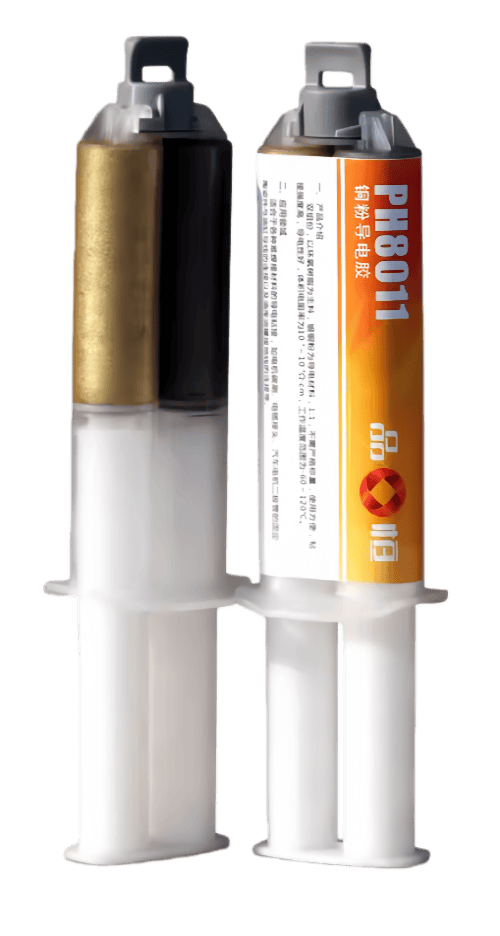 | 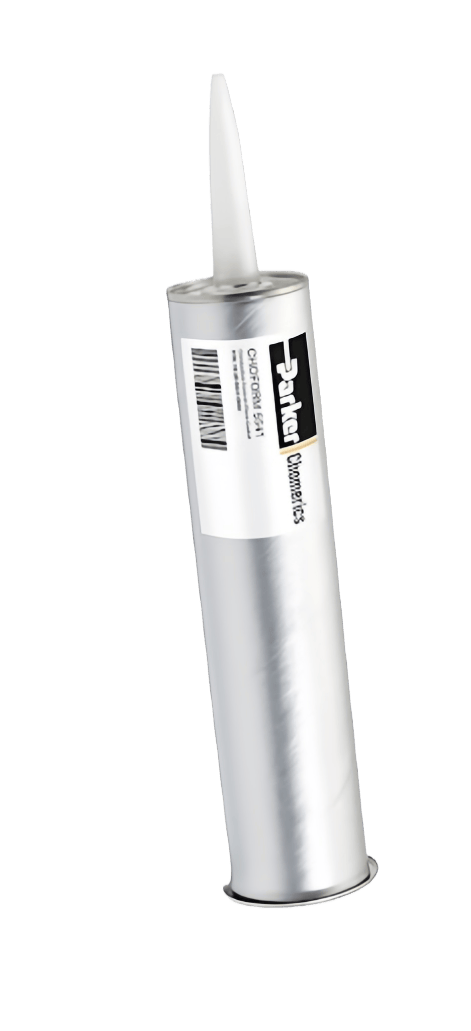 |
Silver-Based Conductive Adhesive Copper-Based Conductive Adhesive Nickel-Based Conductive Adhesive
Top Recommendation: Silver-Based Silicone Conductive Sealant
Reasons: Silicone matrix offers flexibility (accommodates thermal expansion differences between aluminum and glass), extreme weather resistance (≥5 years outdoor service), IP67+ sealing, and silver-based conductivity—perfect for laser modules’ dual needs.
Examples: 3M EC-1100 (room-temperature curing, 10⁻⁴ Ω・cm), Henkel Loctite EA 9697 (medium-temperature curing, high structural strength).
Solution 2: Non-Conductive Sealant + Conductive Auxiliaries (Cost Limitations)
For budget constraints or large gaps—use non-conductive sealant for sealing and additional conductive structures for EMI shielding.
Non-Conductive Sealant Options:
- Silicone Sealant (e.g., Dow Corning 7091): -60℃~260℃, IP68 waterproof, flexible, non-corrosive—ideal for outdoor/high-temperature environments;

- Epoxy Sealant (e.g., Loctite E-20HP): High bonding strength—suitable for stable indoor environments (poor flexibility);


- Polyurethane Sealant (e.g., SikaTack®): Flexible, moisture-resistant—for humid environments (≤80℃ temperature limit).
Conductive Auxiliaries:
- Conductive Foam Gaskets (e.g., nickel-copper plated foam): Fill gaps via compression—requires pre-designed grooves;
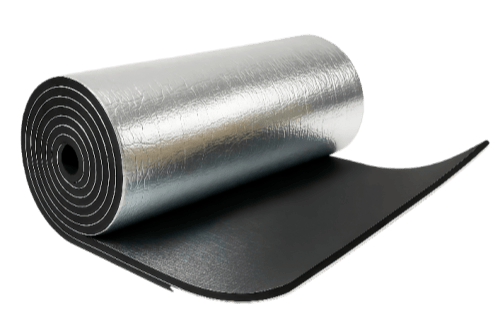
- Metal Spring Contacts (e.g., beryllium copper): Elastic contact for vibration environments—ensure uniform pressure (avoid glass breakage);
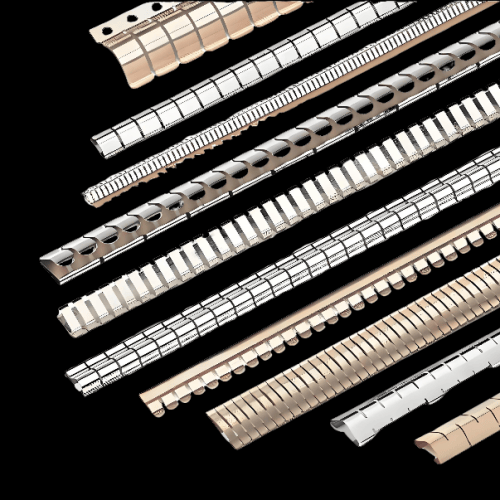
- Conductive Tape (e.g., 3M 1181 Copper Foil Tape): Low-cost—poor long-term reliability (prone to peeling).
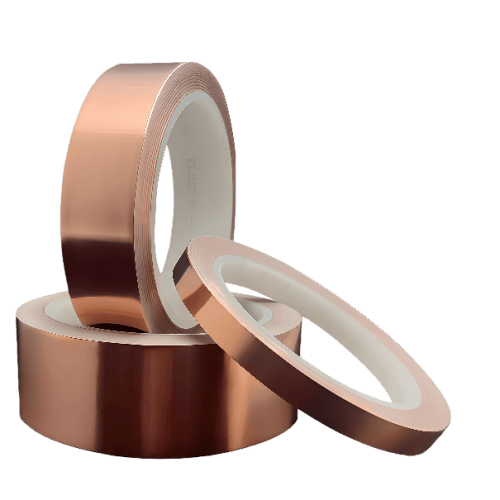
Critical Sealing Process Steps
1) Surface Preparation:
- Aluminum contact surface: Clean with alcohol/acetone to remove oil/oxide; lightly sand (400-grit sandpaper) for adhesion; blow off dust with compressed air;
- Glass window edge (ITO area): Wipe with isopropyl alcohol to remove fingerprints/residues—ensure direct adhesive contact with ITO.
2) Adhesive Application:
- Use a dispensing machine for continuous, uniform application along the aluminum mounting groove;
- Adhesive width ≥ gap width (0.5~1mm for 0.2~0.5mm gaps); avoid bubbles (pierce with a toothpick if present).
3) Assembly & Curing:
- Apply uniform pressure (0.1~0.3MPa) with clamps to ensure full contact;
- Cure per adhesive instructions (e.g., 24h room temperature for silicone, 1h at 60℃ for epoxy); avoid vibration/temperature fluctuations during curing.
4) Sealing Verification:
- Simple Test: Blow air (0.2MPa) at gaps; check for leaks with tissue or soapy water;
- Professional Test: IP67/IP68 certification via water immersion/rain tests for high-reliability requirements.
Optimal Choices by Requirement Priority
Requirement Priority | Recommended Adhesive/Solution | Core Advantages |
High Shielding + High Sealing + Simplified Process | Silver-Based Silicone Conductive Sealant | 2-in-1 function, weather-resistant, ideal for outdoor/industrial use |
Cost-Sensitive + Indoor Dry Environment | Copper-Based Conductive Adhesive / Non-Conductive Silicone + Conductive Foam | Low cost, meets basic shielding/sealing needs |
High Structural Strength + Stable Temperature | Silver-Based Epoxy Conductive Sealant | High bonding strength, rigid connection |
Humid/Corrosive Environment + Medium Shielding | Nickel-Based Conductive Adhesive / Non-Conductive Polyurethane + Nickel Spring Contacts | Corrosion-resistant, prevents oxidation |
# Laser Distance Measuring Modules # Laser rangefinder module
Whether you need OEM/ODM, a standard product or a customized solution, Ntron is your trusted partner.
[✅ Contact Our Sales Engineers Now for the Latest Quote and Sample Information]
[📧 Send Your Project Requirements to: marketing@newtron-tech.com]







Fill in your e-mail:






